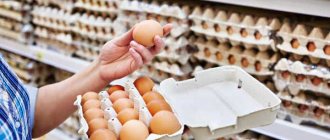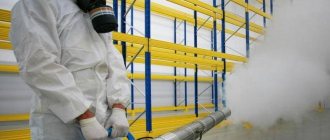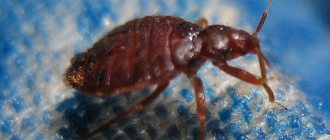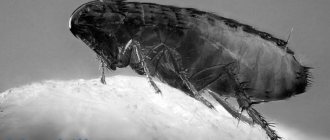According to SanPiN (sanitary and epidemiological rules and regulations), primary processing of eggs is carried out on food blocks. It helps to avoid unwanted poisoning of people eating in public canteens and cafes. Protect them from salmonella, which sometimes coats eggshells. And also to identify a defective product at the enterprise. Processing is carried out according to certain requirements, a full description of which is given in the article.
Safety precautions
The product is processed according to SanPiN rules, during which various disinfectants are used: Nika, Triosept and others.
Food service workers must take precautions.
Work with disinfectant carefully. Make sure that it does not come into contact with bare skin or eyes.
The employee must wear special clothing issued by the organization. Protect your hands with thick rubber gloves.
The organization must have a stocked first aid kit.
Persons over 18 years of age who do not have an allergic reaction to the substances used are allowed to process.
The employee is given safety training. They talk about the rules of first aid in the workplace.
Mechanical cooking of eggs is a technological procedure that requires precision and accuracy. The slightest mistake makes the product harmful to human health.
Today, special equipment can be used for disinfection.
The effect of soda on the shell
Attention! Contrary to popular belief, bacteria on eggshells cannot be killed with soapy water.
Catering organizations use special tools that are unlikely to be on hand at home.
The housewife will come to the aid of soda: baking soda or ash.
The main difference between soda ash is a stronger alkaline reaction (pH = 11 versus pH = 8). Due to this, the antiseptic effectiveness of the product increases. But it is prohibited to eat such a product.
An alkaline environment is destructive for microorganisms; its effect is similar to that of a UV lamp. But it takes some time to achieve results. The egg is disinfected in a solution of baking soda for 30 minutes, and in baking soda for 10 minutes.
Carefully! To avoid chemical burns, you must use protective rubber gloves when working with soda ash.
Advantages of machining
The use of an automatic apparatus for processing eggs in a catering unit greatly simplifies the technological process. Among the advantages:
- disinfection of the product is accelerated;
- error (human factor) is excluded;
- high quality of the procedure performed;
- the possibility of poisoning of catering staff is minimized.
The equipment is easy to use and does not require special skills from personnel.
Other methods of disinfection
You can use other means to process eggs at home:
- Laundry soap also contains alkali and can cope with many infectious agents.
- Alcohol or vodka is the best shell disinfectant. Moisten a bandage with alcohol, wipe the egg with it and let it dry.
- Chlorhexidine solution is another relatively safe disinfectant for humans, which is sold in any pharmacy. It is also often used in dental practice to disinfect the oral cavity.
Requirements for work organization
In SP 2.3.6.1079-01. 2.3.6. requirements for organizing the work of public catering establishments have been collected. They operate in Moscow and other cities of the country.
All employees must be familiar with the sample rules. According to the document, sanitary processing of eggs is carried out in marked containers. The latter are specially allocated for this process. It is important to follow the sequence of operations.
Each product arriving at the catering department that has a short shelf life is recorded in the raw product rejection log (Appendix No. 5 to SanPiN 2.4.1.3049-13).
In it, employees note the date of receipt, the name of the product (in our case, raw eggs), its quantity, invoice details, storage conditions, date and time of its use, and the signature of the person in charge.
The document is maintained in order to track the timely use of the product in the kitchen. Eggs should not be stored in the refrigerator for more than a week. The facts of write-off are taken into account in the “Note” column.
General provisions and scope
The list of workers in the log on the day of inspection must correspond to the list of workers for that day (per shift).
However, to ensure their better preservation during long-term storage, it is recommended to use two modes: at temperatures from 0.5 to -1.5 ° C and from 2 to 2.5 ° C and a relative humidity of 85-88%. Temperature fluctuations should not exceed ±0.5 °C.
Sugar has a stabilizing effect on the protein foam, but the duration of churning doubles.
Attention The temperature and humidity that must be maintained in the pantry directly depend on the type of ingredients stored there. It is recommended to place perishable products in the refrigerator or freezer, depending on the expected shelf life.
Egg processing according to SanPiN
Start
Unprocessed testicles are stored in a special container labeled “for processing.” They cannot be left in boxes or cassettes in the production workshop.
The disinfection process itself is carried out in several steps.
Visual inspection of eggs
Its purpose is to search for defects and damage, including those hidden from view. The test is carried out in a dark room.
For this purpose, a special device is used - an ovoscope. It is a special container, inside of which lamps are installed to illuminate the eggs.
There is a grid for eggs on the drum, where they are laid out. Using directed beams of light, darkening and other defects are looked for on them. The defect is immediately deleted and recorded in the journal.
Soak
A warm solution of soda ash at a concentration of 1-2% is poured into a marked enamel container. It is prepared using the formula: 200 g of soda per 10 liters of water.
Soaking takes 10-15 minutes. The dirt should be completely removed from the egg. The solution is changed as it gets dirty.
Disinfection
The testicles are transferred to another marked container, where there is a different solution. Here the water is diluted with a disinfectant. It must be approved for use for these purposes.
The name and dosage of disinfectants will be indicated below. Leave the product in the solution for 15 minutes. A fresh solution is made for each batch of eggs.
Rinsing
The processed eggs are transferred to a perforated container with holes for draining water.
Eggshells are washed from the disinfectant solution under running water. Its temperature ranges from 40-55°C. This is done until the product is completely washed off. But not less than 15 minutes.
Drying
The perforated eggs are transferred to a new container, on which there is the inscription “raw processed egg.” They will be stored in this container until they are sold.
After processing
All solutions in which the testicles were treated are poured out. The baths with the nets attached to them are disinfected.
At enterprises, eggs are stored at a temperature of no more than 20°C for a week. Before using them, the catering worker puts on clean overalls, washes his hands with soap and disinfects them. The log simultaneously records the consumption of chicken eggs.
How to properly handle eggs
Why disinfect eggshells?
To prevent people from contracting intestinal infections, eggs must be treated in a special way using egg disinfectants. This requirement is written in SP 2.3.6.1079-01 (for public catering organizations) and SanPiNe 2.4.1.3049-13 (for preschool educational institutions).
How are eggs processed?
Upon arrival at the catering unit, the product is immediately removed from the received trays and transferred to containers marked “for processing eggs.” Storing unprocessed products in boxes or cassettes in production areas is prohibited.
Egg processing is carried out in a specially designated area in marked baths or containers. Eggs are processed according to the following algorithm:
- First of all, you need to inspect the product. Damaged eggs are disposed of.
- In the first container, the eggs are treated in a 1-2% warm solution of soda ash for 5-10 minutes. The solution is prepared as follows: 100-200 g of soda per 10 liters of water. If there is dirt on the shell, it is cleaned with brushes.
- In the second container, they are treated in a disinfectant solution approved for this purpose. We recommend using a 1.5% solution of the “Brilliant Light” food disinfectant for eggs and soaking for 5 minutes.
- In the third container, rinse with running water for 5 minutes until the disinfectant is completely washed away.
- Washed eggs are placed in a clean container marked “raw, processed egg.”
Processed products are stored in labeled containers in refrigerators of production facilities.
To prevent consumers from contracting intestinal infections, it is not enough to simply process eggshells; it is equally important to follow the cooking technology.
So, when preparing an omelet, eggs are poured onto a baking sheet or frying pan and placed in an oven at a temperature of 180-200°C for ten minutes. And casseroles, one of the components of which are eggs, are cooked at a temperature of 220-280°C for half an hour. Eggs are boiled for ten minutes from the moment of boiling.
Remember, the safety and health of consumers depends on the correct processing of eggs and adherence to the technology for preparing dishes from them!
Source: https://septolit.ru/blogs/novosti/kak-pravilno-obrabatyvat-yajca
Disinfectants
general information
The egg treatment product must be approved for use as a disinfectant by the regional health authorities.
These drugs (for example, Nika) are versatile. In production they are used as cleaning liquids.
We present a list of disinfectants suitable for processing eggs according to SanPiN in catering.
Chloramine
The product contains ammonia derivatives. Contains 25% active chlorine. Approved for use in preschool and school institutions, medical institutions and catering establishments.
Available in the form of white or light yellow powder. For one bucket of water in 10 liters, dissolve 50 g of powder.
Economy (25M, 50M)
A disinfectant whose main active ingredient is chloride. Packages labeled “25M” contain 12.5% of it, and containers labeled “50M” contain 25%.
Used for soaking eggs at a temperature of 25-30°C in a solution with a concentration of 0.05%. To prepare it you will need 10 liters of water and 10 ml of “50M” liquid or 20 ml of “25M”.
Javelon (Novelty-chlor)
Used for food processing. The main component is the sodium salt of dichloroisocyanuric acid.
It comes in the form of tablets, each weighing 3.35. Releases 1.5 g of active chlorine in water. To prepare the working solution you will need 7 tablets per 10 liters of liquid.
Optimax
The active substance is chlorine. The liquid is clear and odorless. To prepare the solution, use 100 ml per 10 liters of water.
Eggs are soaked for 20 minutes in a solution at a temperature of 20°C. After which they can be washed under running water.
Nika-2
Available in the form of a liquid containing active chlorine. Suitable for beverage, dairy, meat and bakery industries.
Niki's solution is used at a temperature of 40-45°C. It is recommended to soak the eggs for 20-30 minutes. Use 200 ml of product per 10 liters of water.
Triosept (oxy, lux, endo)
Colorless liquid. Like Nika, it contains chlorine.
The instructions for processing eggs recommend diluting the product in a ratio of 100 ml of solution and 9900 ml of water. Soak them in a solution at a temperature of 25-30°C for 20-30 minutes.
You can familiarize yourself with the procedure for hygienic processing of eggs for kindergartens in the article “Instructions for processing eggs in a preschool educational institution (kindergarten).”
Did you like the article? Please like and repost. Comments are open to discuss the topic.
Why is disinfection needed?
Salmonella bacteria are found in chicken droppings. Once on the shell, they multiply, enter the egg through cracks and infect it.
If you eat undisinfected eggs, there is a risk of infection. For the same reason, doctors advise throwing away cracked specimens.
Salmonella finally dies in 8–10 minutes at a temperature of +75 °C, and instantly at boiling temperature. Therefore, the safest dish is hard-boiled eggs. Whereas when frying fried eggs, not all bacteria die.
The infection can also be contracted through hands, utensils and anything that has touched the contaminated product. This is why it is necessary to disinfect eggs before eating.
Why is soda added to tea?
Area for preparing kystybys:
| Technological operations | Equipment |
|
|
Minced meat preparation area
Types of minced meat:
- vegetable
- fish
- meat
- mushroom
- cereals
- from offal
- fruity
| Technological operations | Equipment |
|
|
Noodle preparation area:
Range :
- Homemade noodles
- Lenten noodles
- Noodles with dill
| Technological operations | Equipment |
|
|
Puff pastry production area
(yeast, unleavened)
Assortment: pies
- Pies
- Krausans
- Puff sticks
- Puff p/f tubes
| Technological operations | Equipment |
|
|
Site for the production of flour culinary products from yeast dough
Range:
- Buns
- Pies
- Pies
- Cheesecakes
- Sausages in dough
- Pizza
- Rum.baba
Scheme for the production of flour yeast culinary products
| Technological operations | Equipment |
|
|
Pancake preparation area:
Range:
- Yeast pancakes
- Stuffed pancakes
| Technological operations | Equipment |
|
|
Production site for fried pies, whites, chebureks, and “Dachny” pies
| Technological operations | Equipment |
|
|
Area for preparing chak-chak, kabartma, brushwood and baursak.
| Technological operations | Equipment |
|
|










